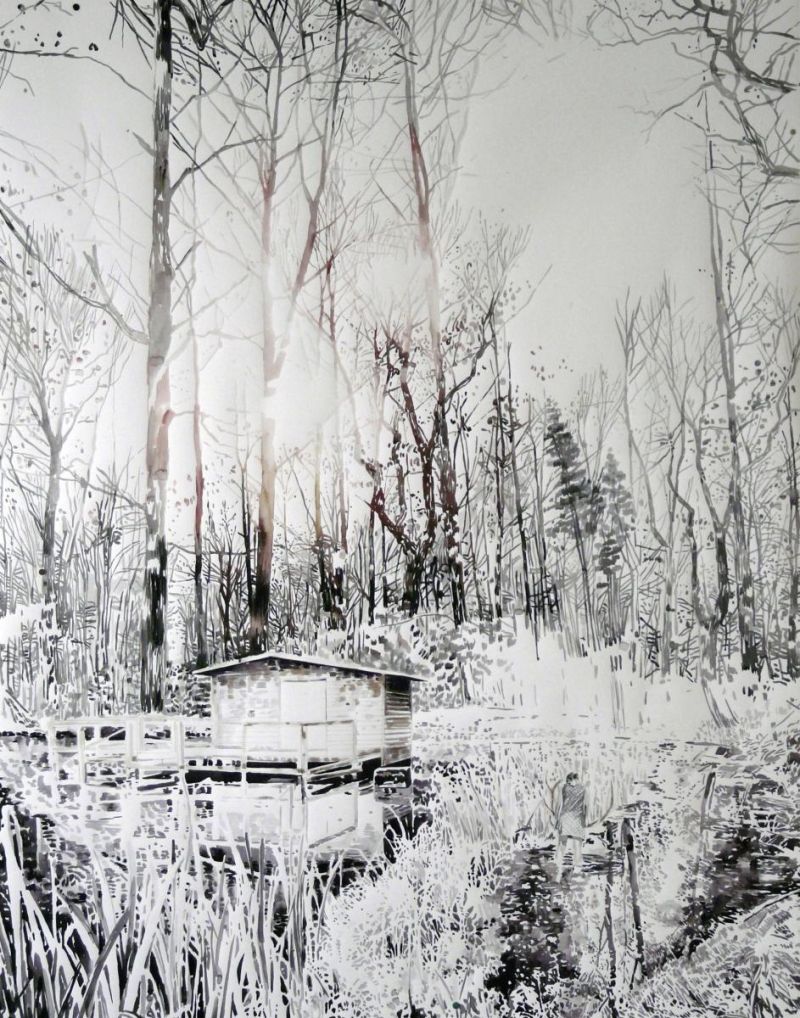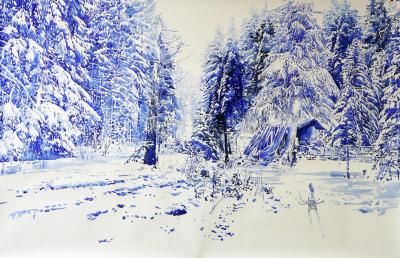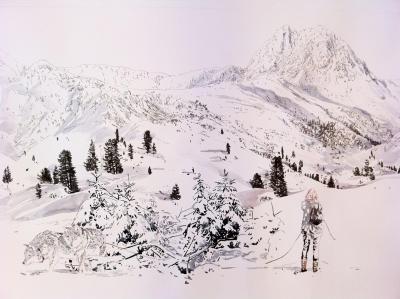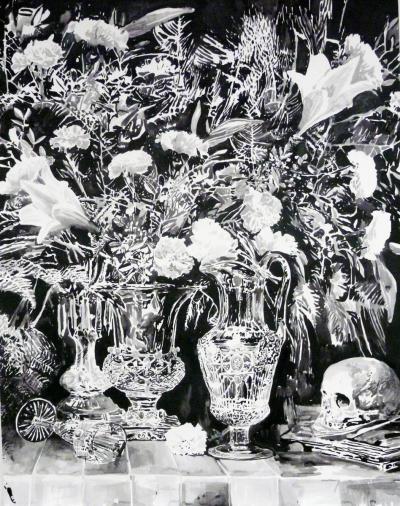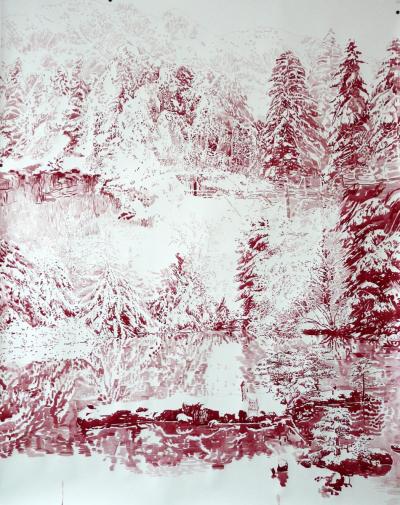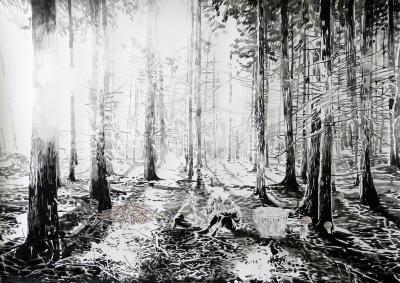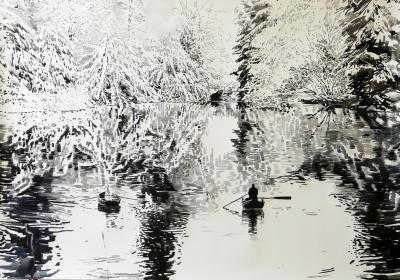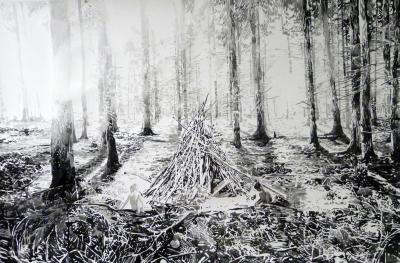Małgosia Jankowska
Mediathek Sorted

In the enchanted forest
Sometimes a picture can the propel what has been experienced like a shock over white paper. And sometimes not. For some images all it takes is a tiny detail, an almost imperceptible interruption, a short pause to relate the unthinkable. And other pictures speak of great emotions so loud and clear that they can bludgeon with their romanticism. Małgosia Jankowska’s images show no past and nothing that would point to the future, only the somewhat theatrically staged solitude of the forest, which she draws with pencil and felt pen. They capture a brief moment and hold it to get our attention for the present. But which ‘present’ is it?
If we follow the artist’s captions ‘Zauberwald’, ‘Waldlichtung’, ‘Waldsee’, ‘Schwarzwald’ (‘enchanted forest’, ‘forest clearing’, ‘wooded lake’, ‘Black Forest’), then we end up immediately in the world of fairy tales and legends. Małgosia Jankowska’s tall pines and the myth-saturated undergrowth have, nevertheless, none of the cloying romanticism of popular German stories with their hackneyed rhyme ‘Herz’ (heart) with ‘Schmerz’ (pain). Because of their fairy-tale character, the works occupy an opposing place in relation to what really and actually happened yesterday. But the razor-sharp black-and-white drawing that conveys an existentialist basic sense, an abstract space, is also free from the pressures of the political present. It thus takes from the figures hidden between the fern and the moss some of the burden they would otherwise bear. It needs the density of the forest and focused distance. Otherwise, the presence of terror would be unendurable. Just think of Polish forests – the Erzgebirge (Ore Mountains) – as full of wooden chips, the peaks all bald as a result of acid rain. And thus the silent yet powerful giant leaves (up to 190 x 150 cm) succeed in the impossible: to tell with nature of the repression in a tone that sounds as if Adalbert Stifter would have written it, because it sings of spring, summer, fall and winter, ‘satisfying and soul calming’.
The lines of this artist flow as streams of energy in a labyrinthine space of compressed experience. The forest is to her both linear reality and symbolization of the real. She follows the lines to connect the subconscious and her projections with the infinite space of the universe.
















































































